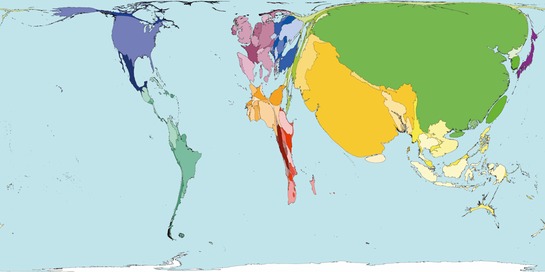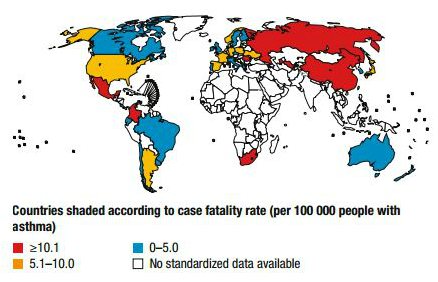Respiratory Impacts
|
Poor air quality has comprehensive negative effects on the respiratory health of citizens. The leading result of death in China connecting to air pollution is respiratory disease [1]. A study by the World Health Organisation stated that respiratory diseases caused 6.48% of all deaths worldwide in 2002, an average of 595 deaths per million people per year. Respiratory disease is defined as 'diseases of the lungs not caused by infection' [3]. Respiratory disease is caused by the many pollutants present in smog and bad air quality - of which the most severe are Particulate Matter, Sulphur Dioxide, and Nitrogen Dioxide. The most severe diseases as a result of poor air quality are:
China suffers the most deaths by respiratory disease in the world. Although the number has been gradually declining over the years, primarily due to increased quality of hospital and medical treatments, the actual status of air pollution has not been addressed, which results in the country still having the highest mortality in terms of respiratory disease [1]. Note China does not necessarily have the highest mortality rate percentile - many third world African and poor countries and have even higher mortality rate percentiles, but these are mainly due to the lack of any hospital care instead of the issue of air pollution itself. A study conducted by World Mapper in 2002 shows the rates of death per million between 10 industrialised countries with the highest mortality rates.
In another study by the World Health Organisation conducted in 2012, it shows that the respiratory deaths in China has reduced to a surprising 750 deaths per million. This is primarily due to the advancement in treatment of diseases such as Chronic Bronchitis. Despite such improvements, China still remains the industrialised country with the highest mortality rate - the other countries ranked above have also drastically reduced their mortality rates [3]. |
Figure 1 shows the data displayed on a cartogram. The cartogram was taken by World Mapper in 2002. It displays the amount of deaths by caused Chronic Bronchitis. From the graph, one can decipher that China and India constitute to the largest victims of respiratory death, such as chronic bronchitis. Although this is partially due to the country's larger population, the main reason still remains with the very poor air quality present in the countries. As shown in the list and the cartogram, it is clear that China has the highest death percentiles in industrialised nations, and when compiled with their large population, results in them having a significantly higher mortalities compared to lower-population countries [2].
Figure 2 is a map showing asthma mortalities throughout the world. The map shows that countries such as China and some others have the highest cases of asthma mortalities, a further reinforcement of China's poor air quality. Asthma is normally not a life-threatening disease, but severe cases induced by high amounts of air pollution can make the disease fatal. A study by the World Health Organisation also states that the lack of medication for treatment of chronic respiratory disease also attributes to the high mortality rates of asthma [3]. |
References:
[1] Nielsen, C, Ho, M. (2010). Air Pollution and Health Damages in China.
[2] Worldmapper. (2002). Respiratory Disease Deaths. Available: http://www.worldmapper.org/display_extra.php?selected=457. Last accessed 4th Nov 2014.
[3] World Health Organisation. (2012). Chronic Respiratory Diseases. Available: http://www.who.int/topics/chronic_obstructive_pulmonary_disease/en/. Last accessed 2nd Nov 2014.
[2] Worldmapper. (2002). Respiratory Disease Deaths. Available: http://www.worldmapper.org/display_extra.php?selected=457. Last accessed 4th Nov 2014.
[3] World Health Organisation. (2012). Chronic Respiratory Diseases. Available: http://www.who.int/topics/chronic_obstructive_pulmonary_disease/en/. Last accessed 2nd Nov 2014.


